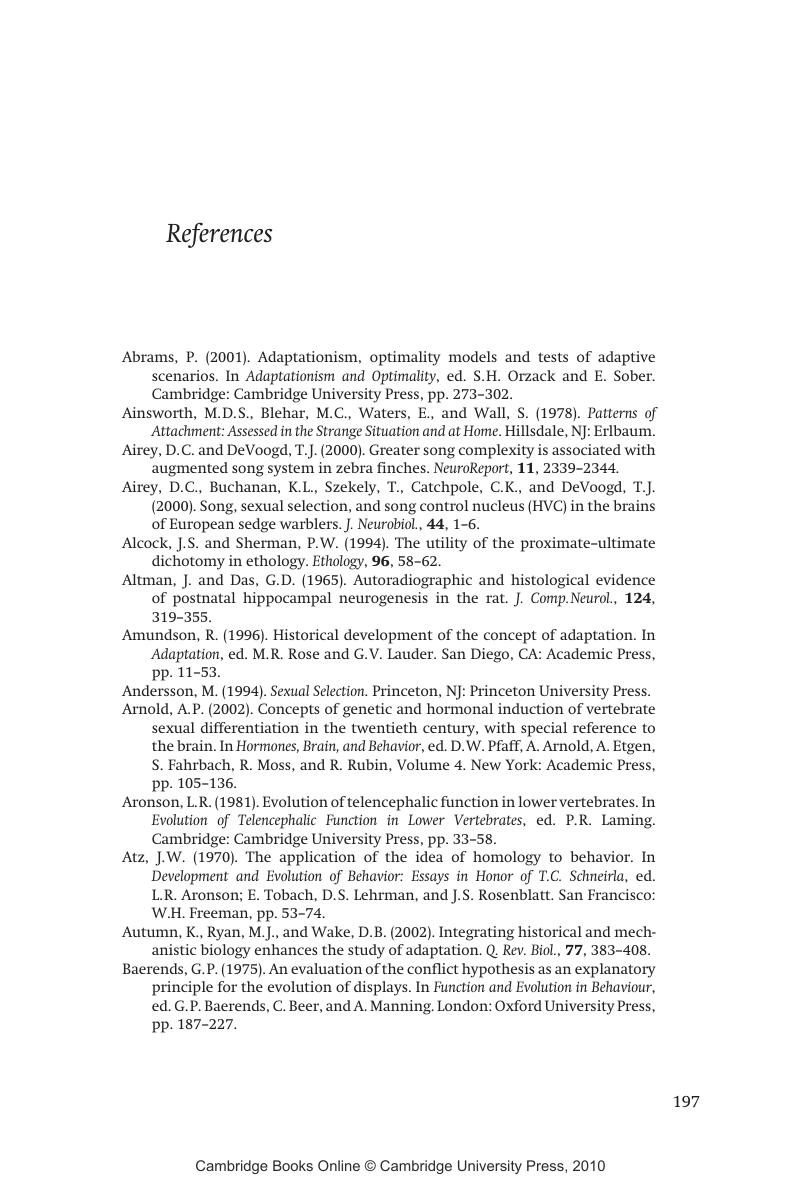Book contents
- Frontmatter
- Contents
- Contributors
- Foreword by Aubrey Manning
- Preface
- 1 On aims and methods of ethology
- 2 Tinbergen's four questions and contemporary behavioral biology
- 3 Causation: the study of behavioral mechanisms
- 4 Tinbergen's fourth question, ontogeny: sexual and individual differentiation
- 5 The development of behavior: trends since Tinbergen (1963)
- 6 The study of function in behavioral ecology
- 7 The evolution of behavior, and integrating it towards a complete and correct understanding of behavioral biology
- 8 Do ideas about function help in the study of causation?
- 9 Function and mechanism in neuroecology: looking for clues
- References
- Index
- References
References
Published online by Cambridge University Press: 19 February 2010
- Frontmatter
- Contents
- Contributors
- Foreword by Aubrey Manning
- Preface
- 1 On aims and methods of ethology
- 2 Tinbergen's four questions and contemporary behavioral biology
- 3 Causation: the study of behavioral mechanisms
- 4 Tinbergen's fourth question, ontogeny: sexual and individual differentiation
- 5 The development of behavior: trends since Tinbergen (1963)
- 6 The study of function in behavioral ecology
- 7 The evolution of behavior, and integrating it towards a complete and correct understanding of behavioral biology
- 8 Do ideas about function help in the study of causation?
- 9 Function and mechanism in neuroecology: looking for clues
- References
- Index
- References
Summary

- Type
- Chapter
- Information
- Tinbergen's LegacyFunction and Mechanism in Behavioral Biology, pp. 197 - 227Publisher: Cambridge University PressPrint publication year: 2009

